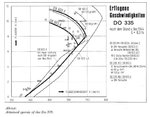wmaxt
Staff Sergeant
Dragndog,
If you look at my post you will notice that I specifically said that drag would be to high for the P-38 to go that fast at 30,000ft.
The 440mph was realized between 20,000ft and 23,000 which would be possible for the P-38.
I have only Lockheed data on this speed and though this data was only revealed in the 1980's, never used as a sales tool and Lockheed data has proven reliable and accurate over the years I have never found corroborating data from a second source to confirm it.
The fact romaines that there were faster twin engine fighters in WW2 primarily the Hornet which I think was capable of speeds slightly over 450mph.
Bill
If you look at my post you will notice that I specifically said that drag would be to high for the P-38 to go that fast at 30,000ft.
The 440mph was realized between 20,000ft and 23,000 which would be possible for the P-38.
I have only Lockheed data on this speed and though this data was only revealed in the 1980's, never used as a sales tool and Lockheed data has proven reliable and accurate over the years I have never found corroborating data from a second source to confirm it.
The fact romaines that there were faster twin engine fighters in WW2 primarily the Hornet which I think was capable of speeds slightly over 450mph.
Bill
Last edited:

